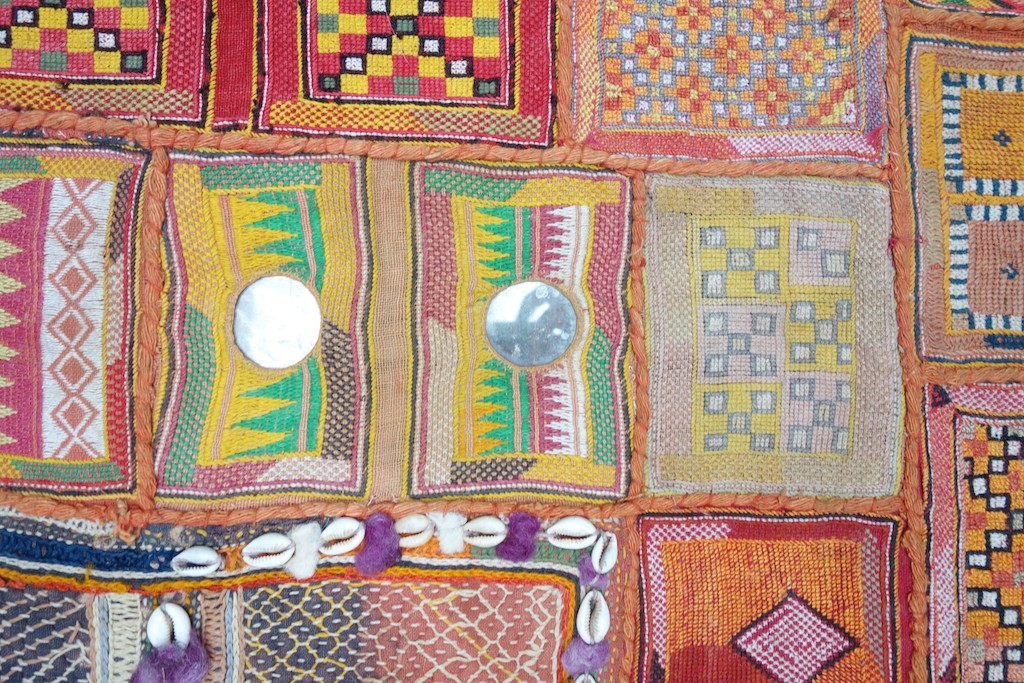
This type of Indian patchwork is often dyed by dealers, and others, in a dull brown, dark grey, black or a red colour, which makes it virtually impossible to see the original colours or patterns. Fortunately this cloth has not been subjected to this undignified treatment.
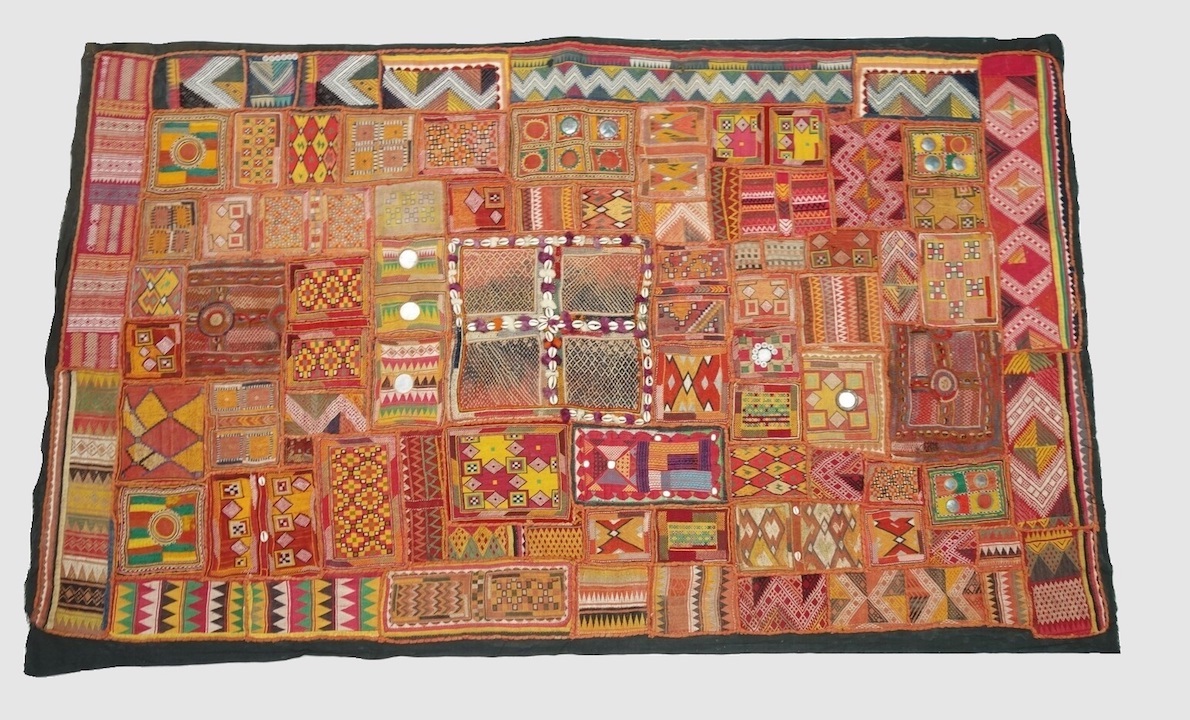 Patchwork of various squares and rectangles of (mainly) Banjara embroidery with a wide variety of repeating, geometric patterns in various colours. India, 20th century (TRC 2024.2190).
Patchwork of various squares and rectangles of (mainly) Banjara embroidery with a wide variety of repeating, geometric patterns in various colours. India, 20th century (TRC 2024.2190).
Special attention is being paid to this particular example of Banjara work, as it includes many different patterns, combinations of motifs, as well as colours. There are, in fact, about 100 different pieces with a wide range of patterns. It also includes some duplicates and individual lengths of embroidery that had been cut up and used in different places within the patchwork.

The Banjaras (also known as the Lombanis, Lambadis, Wanjaras), are a semi-nomadic people who live in the western parts of India. Historically they have undertaken annual migrations with their families, herds and trade goods from central to southwestern India.
It should be noted, however, that modern methods of transportation have made this form of life virtually redundant and other ways of making a living, including commercial embroidery by women, are being developed.
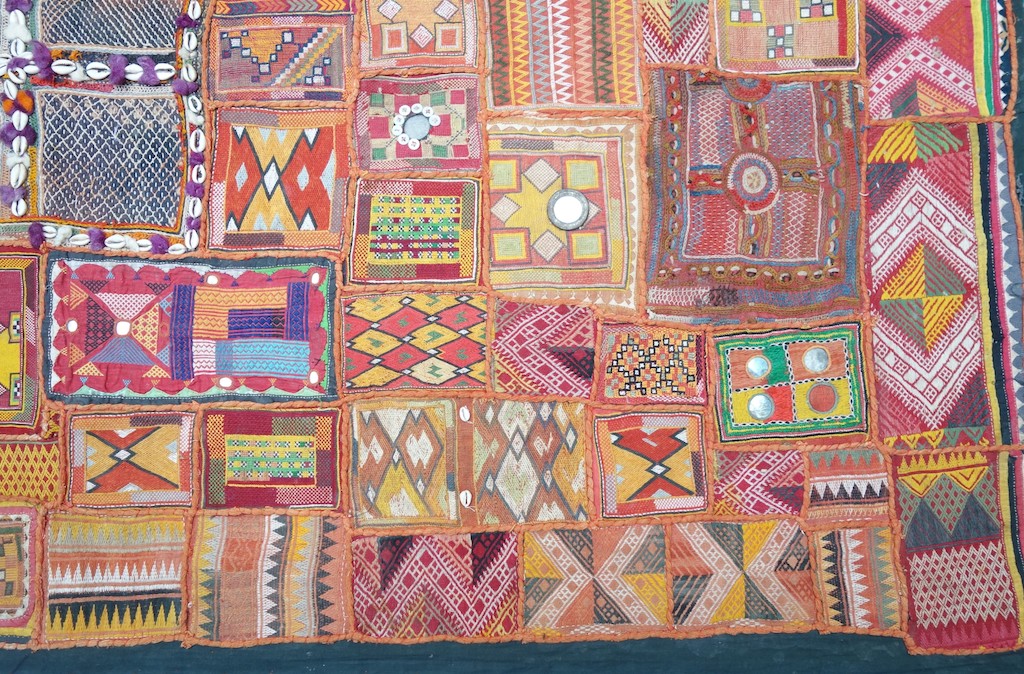
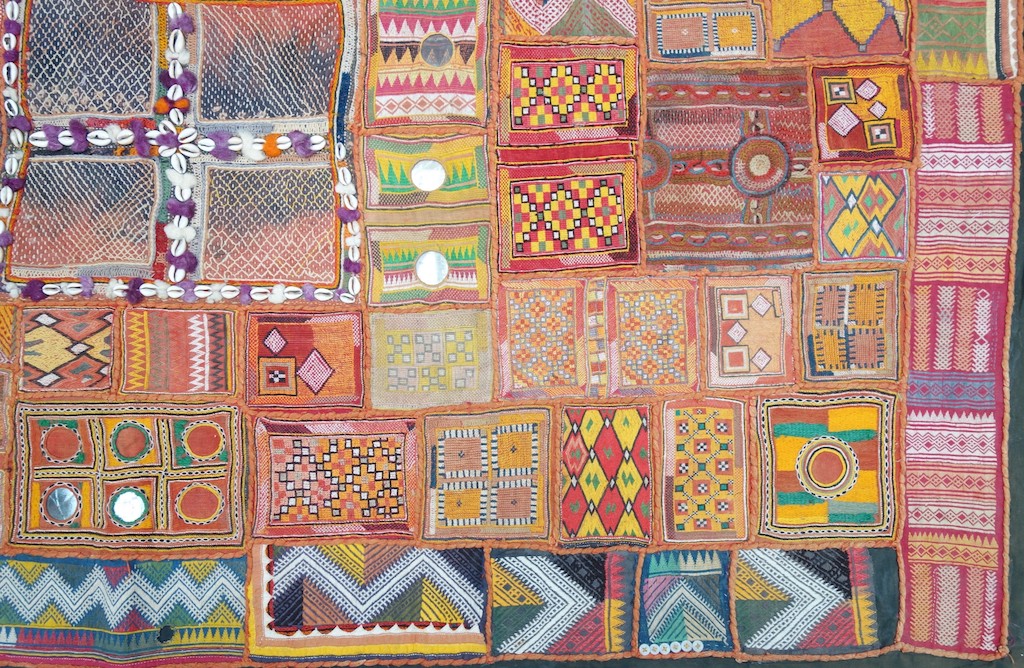
Banjara embroidery is discussed in some detail in the recently published Vol. III of the World Encyclopedia of Embroidery (London: Bloomsbury 2021, pp. 335-342), published under the aegis of the TRC. It is normally worked on an even, plain (tabby) weave cotton cloth, which is worked with cotton threads in a variety of colours. The main stitches include running stitches of various types, including evenly spaced, small running stitches called doranaaki, as well as chain stitch (vele), herringbone stitch, bargello stitch, diamond stitch (nakra), long and short stitch, darning stitch and cross stitch.
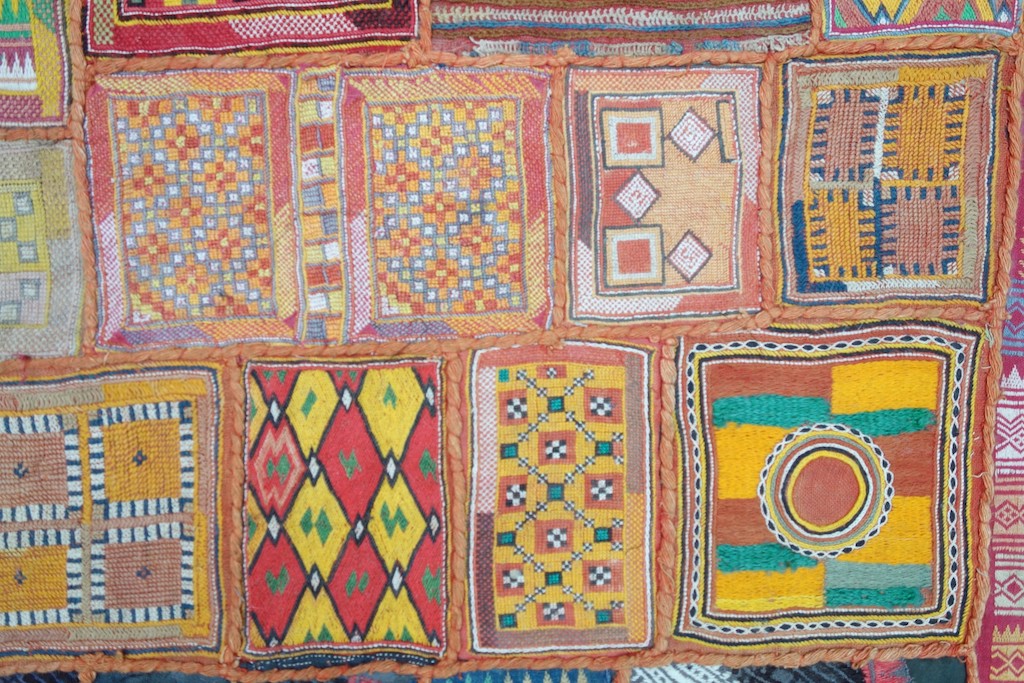
Banjara patterns are based on counted thread work using a wide variety of repeating geometric motifs in three or four colours, and are known for their use of various combinations of yellow, orange, red and black. Figurative motifs, such as humans, flowers, birds and animals, are seldom used.
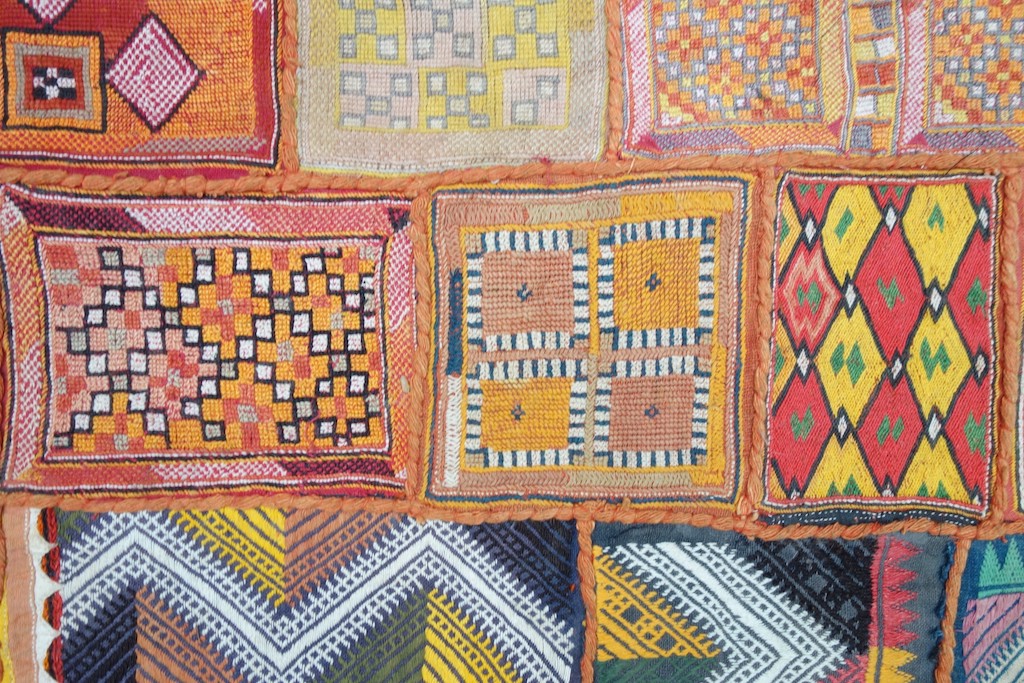
The mirrors are regarded as amulets that turn the evil eye away. Iin contrast, cowrie shells are regarded as a symbol of prosperity.











